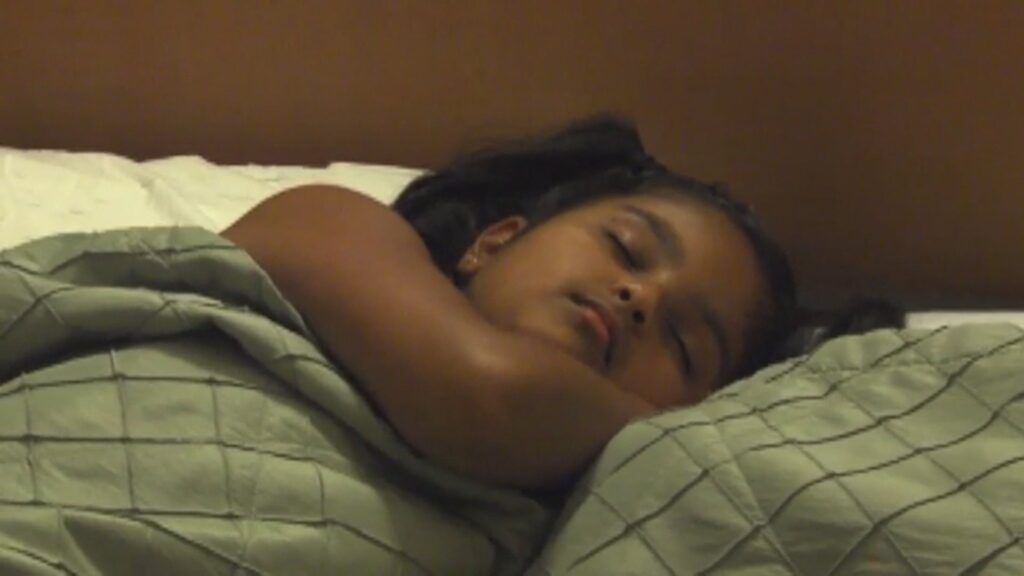Considering back-to-school health
INDIANAPOLIS (WISH) — Back-to-school season is here, and while parents are busy grabbing supplies and organizing routines, health experts say it’s also the perfect time to focus on sleep and nutrition.
Amanda Pantone, a registered dietitian with Community Health Network, joined News 8 Daybreak to share ways families can set their kids up for success both in the classroom and at home.
“It’s important to get the right amount of sleep to help with mental and physical well-being,” Pantone said. “If we’re not getting enough sleep, it can increase our risk of chronic conditions like obesity, hypertension, diabetes, and decrease attention and cause behavior problems at school.”
While many assume eight hours of sleep is the magic number, Pantone says it depends on age.
- Children ages 3–5 need 10–13 hours.
- Kids ages 6–12 need 9–12 hours.
- Teens between 13–18 need 8–10 hours.
“It’s all to do with growth,” she said.
Pantone also encouraged parents to start dialing back screen time in the evening, especially as the school year starts. “Reducing screen time around bedtime is a big indicator of helping your kids fall asleep,” she said. “Because the blue light emitted by screens actually decreases our body’s natural release of melatonin, which is the hormone that helps us fall asleep.”
As for those kids who insist on keeping their iPads or want to read in bed? Pantone says the type of activity matters.
“I think reading at night would be okay, because we’re not getting that blue light,” she said. “But try to set limitations, like, ‘Okay, these are the expectations an hour before bedtime.’ Let’s reduce that screen time.”
She also had a few practical suggestions for helping kids part ways with their devices at night.
“I love an old-school alarm clock rather than using phones as the alarm, just to help encourage putting devices away. Let’s keep them in the living room or in the kitchen,” she said.
And when it comes to food, Pantone says the key is balance, giving kids what they want and what they need.
“My husband’s actually a teacher,” she said. “School lunches can be really early, he told me yesterday his lunch was at 10:30. So when kids get home, they’re quite hungry. It’s important to have snacks that include both protein and fiber, which come from our fruits and vegetables.”
Pantone recommends preparing simple snack options that travel well and give kids fuel for the day, “If you’re sending them with snacks to school, I encourage packing a cold bag with some ice packs. That allows for more options, especially if they have after-school activities.”
She pointed to a healthy snack duo as an example: apples and trail mix.
“The trail mix is going to be more of the protein and healthy fat,” she said. “And then the apple, I always use snack time as a way to bridge gaps on a food group you may not have hit yet that day, whether that’s a whole grain, a fruit, or a vegetable with your protein.”
Pantone says pre-packing snacks for the week makes it easy for parents to stay consistent. “You’ve actually got it in the bags already. That way parents can really set this out for the week and get things going,” she said.
And even if your child is getting school lunch, she recommends sending them with a little something extra.
“The big thing with school lunch is, with it being so early, they might be really hungry come dinner time,” she said. “So I would recommend offering a midday snack just to help bridge those gaps, especially if they have after-school activities. If dinner’s not going to be until 6:00 or 7:00, it’s really important to make sure that by dinner time they’re hungry and ready to eat, to help with portion control, but not so starving that portion control becomes difficult.”
For tips on picking healthy snacks for kids, click here.
About The Author
You may also like
-
EPA administrator formally launches bid to undo greenhouse gas rule
-
Colts cornerback Jaylon Jones carted off with injury during practice
-
Colts QBs pushing each other to improve camp amid competition
-
Underage drunk driver clocked in going 140 MPH on I-69 in Greenwood
-
One more hot day with increasing rain/storm chances through end of July | Jul. 29, 2025

